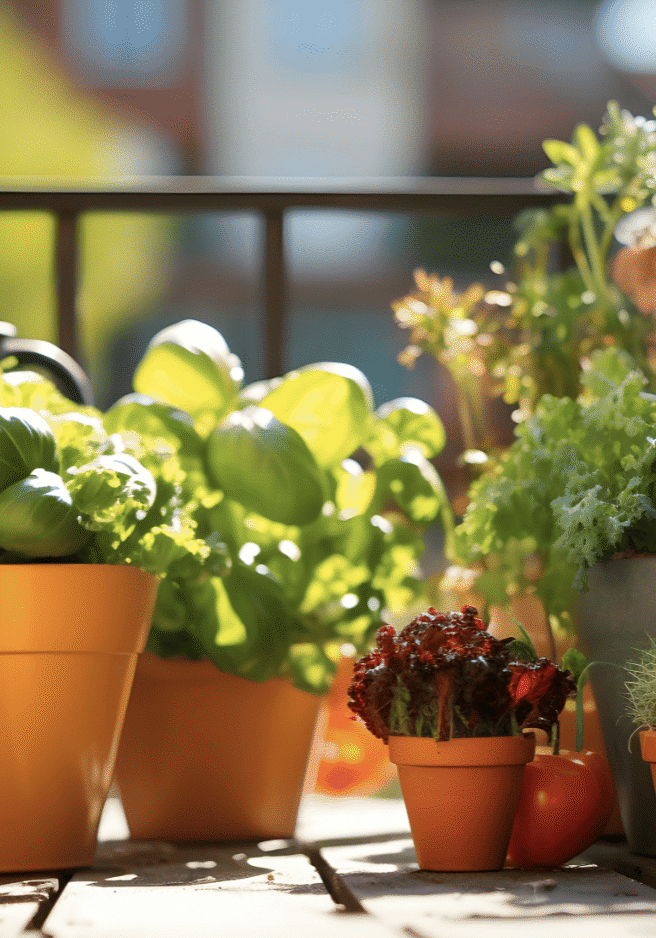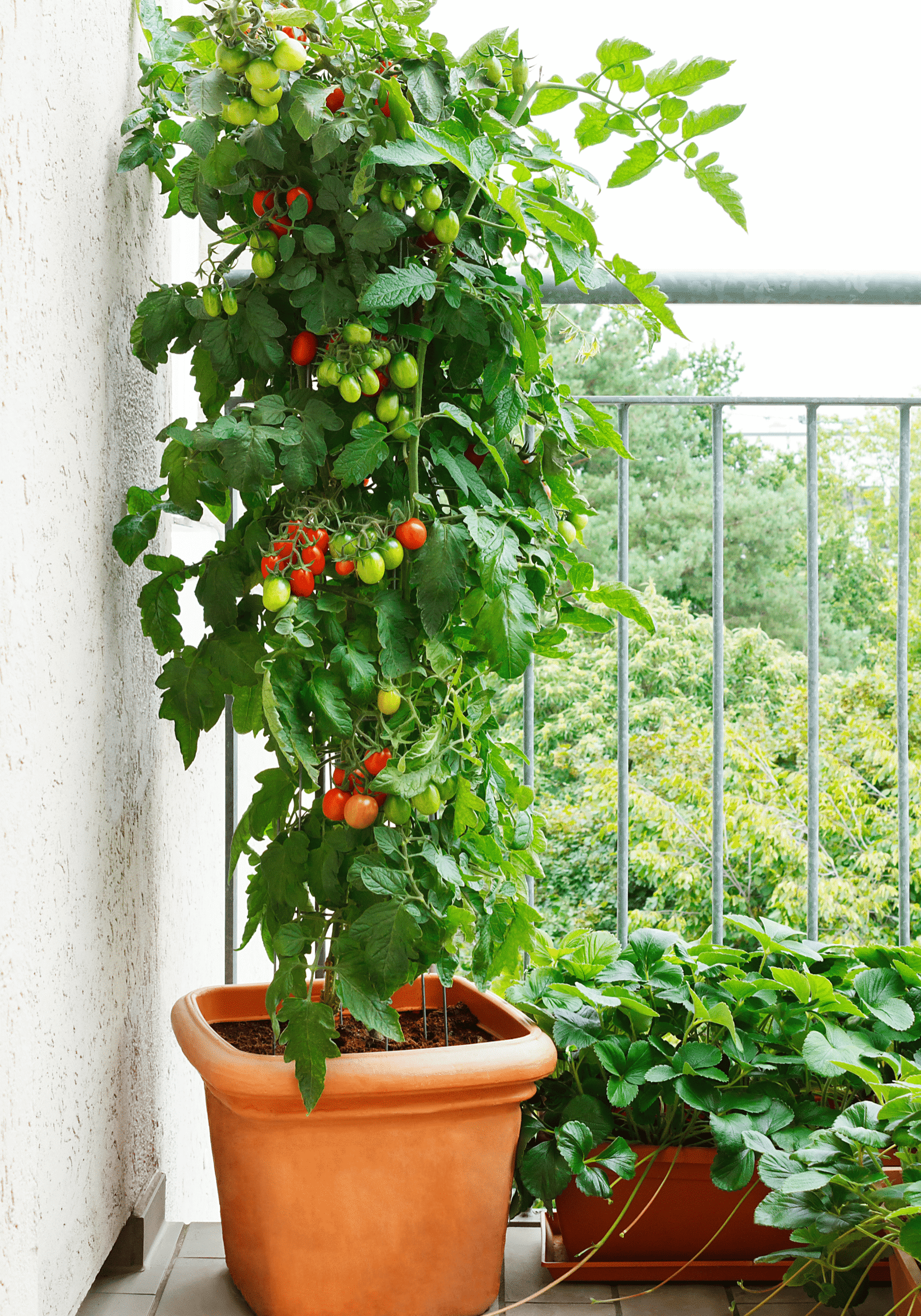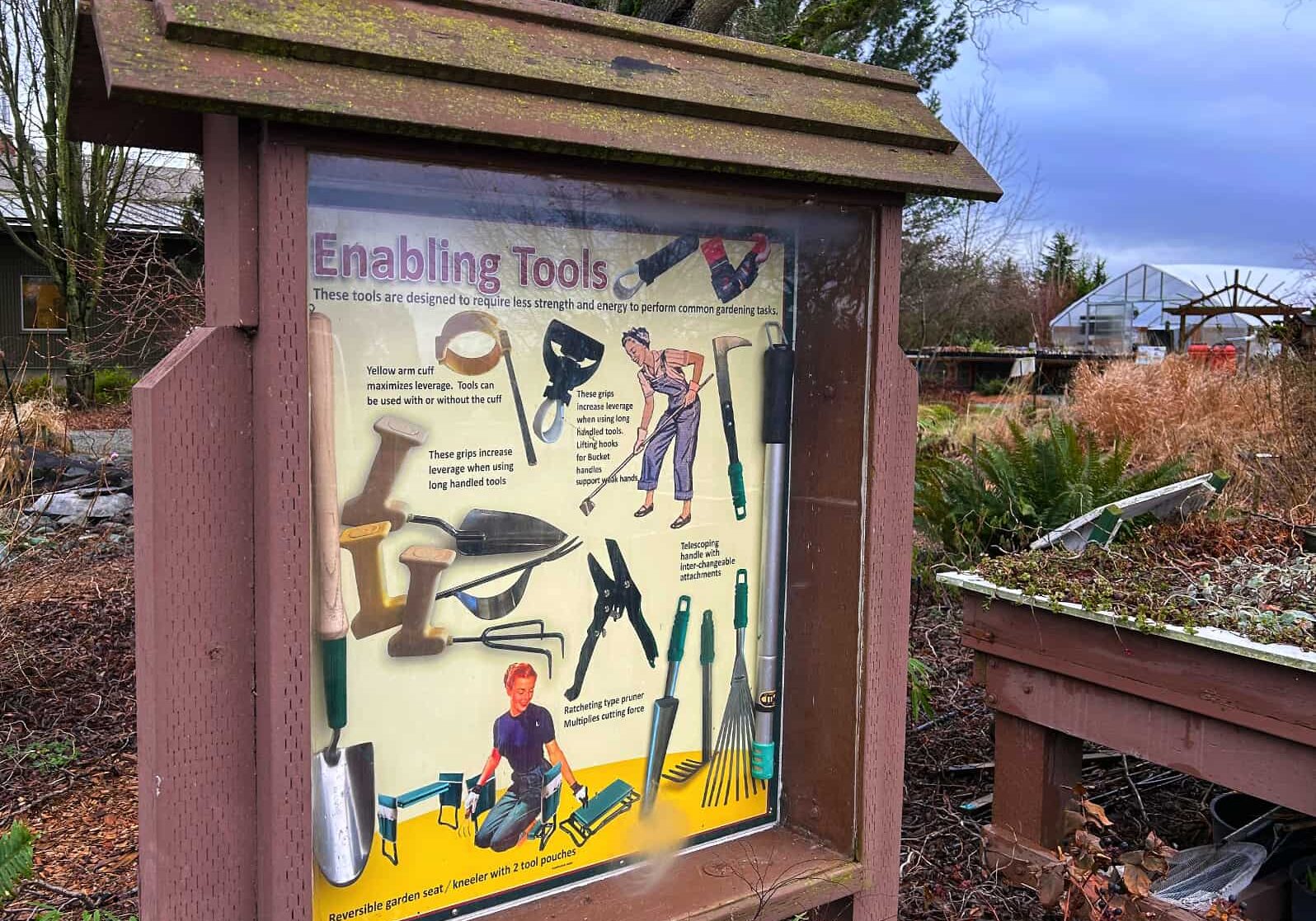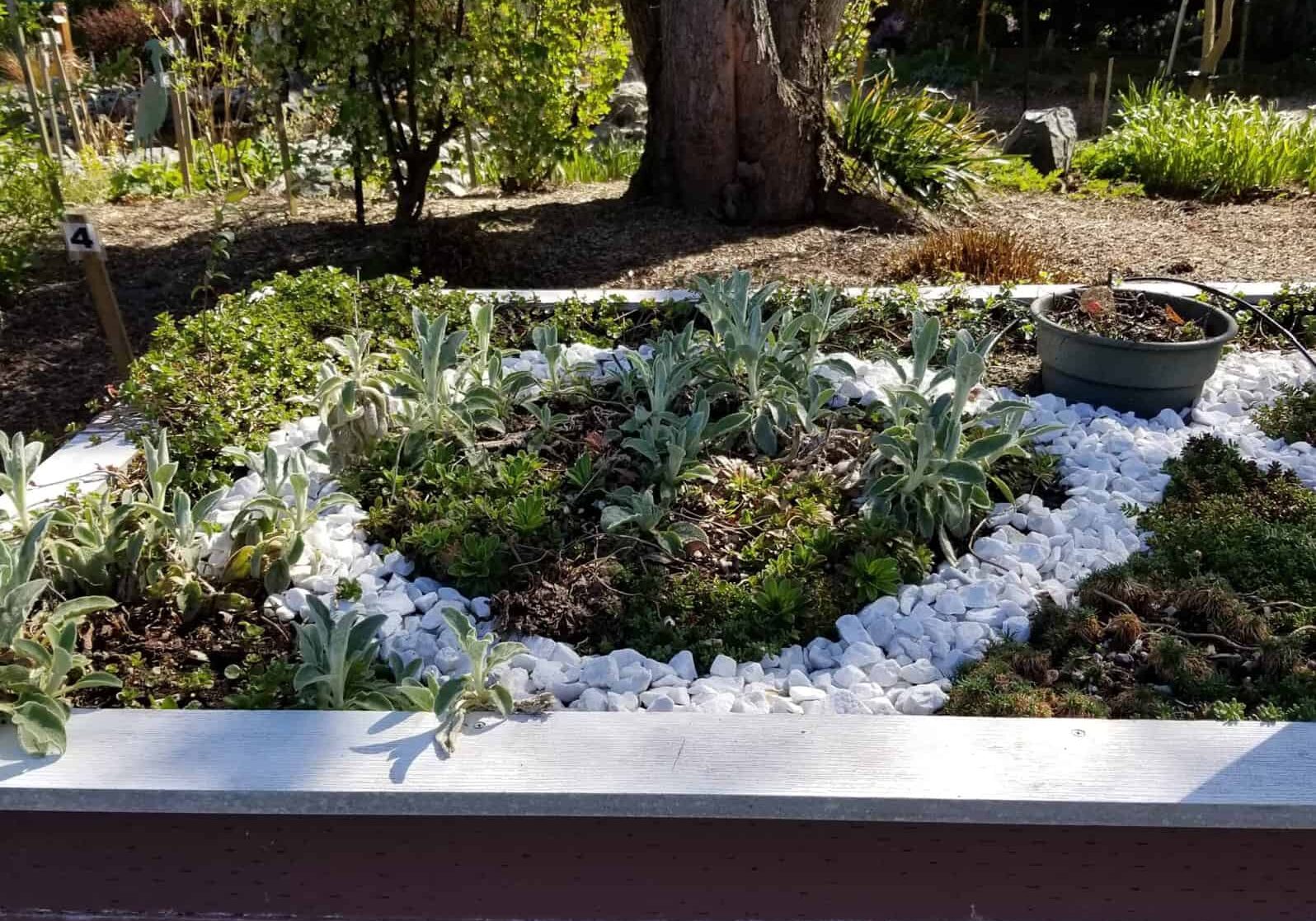Gardening for All Abilities


Gardening for All Ages and Abilities
Practical tips and ideas for adapting the garden through life’s transitions
By: Ginny Bode with Madelyn Case and Anita Reetz, Skagit County WSU Extension Master Gardeners
Gardeners know spending time in the garden feeds the soul. But sometimes, as life changes, we face the need to adapt how we garden so it is possible for ourselves or those we love to continue cultivating wellbeing through gardening.
For some, physical limitations present lifelong challenges; for others, aging begins to interfere with the bending, kneeling, and digging associated with gardening. There are many reasons to take heart and continue to enjoy gardening by implementing some of these adaptive methods.
In her book Gardening for a Lifetime, Sidney Eddison sums up the reason for adapting when she says, "We are all doing exactly the same thing—trying to hang on to something we love." Her book is loaded with practical ideas for reducing and removing barriers that hinder and continue the joy of growing plants through life's transitions.
Reducing the size and work of a garden is the first step, followed by making it easier, more accessible, and user-friendly. A vegetable garden the size you've always had, and probably shared with others, can be resized to reduce both the work of maintaining and the work of harvesting. Choose to grow your top favorites, looking for plants that require less maintenance.
Eddison writes about requiring a "standard of good behavior" for perennials. Her measure includes observing a perennial's health, fortitude, and ability to withstand the extremes of summer and winter. They must be "well-behaved" and not invite pests. As plants age out, replace them with sizes and varieties that are easier to maintain. And, because climbing ladders is problematic as we age, choose low-profile trees and shrubs that are easier to reach for pruning and maintenance.
Pay Attention to Walkways
Every garden needs to be accessible and safe. Falls are problematic and can limit the ability to garden even more. Remove any places that may cause one to stumble. Eliminate a dip in a walking path and poor transitions between surfaces. Smooth pathways such as pavers, rather than woodchips or gravel, ensure ease for every gardener, particularly those who need the aid of a cane, walker, or wheelchair.


Be Amazed by What Can Be Grown in Containers
Life can throw us a curve, and home may change from acreage or a city lot with a garden to an apartment. Don't let it rob the joy of gardening. When faced with gardening on a patio, containers can provide an excellent way to get a dirt fix. Most home gardeners are familiar with growing flowers in pots and containers. Many also successfully grow a wide range of vegetables, including tomatoes, beans, and kitchen herbs in pots. Depending on the space and container size, some folks even grow potatoes! The Vegetable Gardener's Container Bible by Edward Smith provides advice for growing an abundant vegetable garden on your patio or balcony. Smith's book is a stalwart in gardeners’ libraries because it is packed with information covering sun exposure, pot size, soil choices, and which varieties do best in containers.

A narrow bench fitted to the edge of a raised bed allows for tending without kneeling.
Raised beds are also an excellent solution to making the garden user-friendly, making it possible to get your hands in the dirt without bending or kneeling. By keeping the beds narrow, 4' or less, every inch of the garden is reachable from a standing or wheelchair position. It is incredible how much can be grown in a raised bed. With the popularity of raised beds, kits that only require simple assembly are available, or you can use the plans referenced later in this article.
Master gardener and adaptive gardening consultant Toni Gattone shares many adaptive gardening ideas in her book The Lifelong Gardener. Faced with chronic back pain, she searched for ways to adapt her northern California garden. She collected considerable wisdom about assessing limitations and finding joy in the changes. In the book, Toni profiles several gardeners faced with specific challenges and how they solved them with intentional choices and tools.
Gattone has a chapter about tools available for gardeners who face physical challenges. Scooters, carts, and ergonomically designed tools reduce some of the problems caused by aging joints. Long-handled hoes and weeders can make it much easier to garden from a bench.
Share a Gardening Space with a Friend or Join a Community Garden
Another way to garden without a home garden is to share a space. Many communities have garden spaces for people who need a place to garden. Whether in a community garden or sharing space in a friend's garden, both offer the additional benefit of social interaction and shared knowledge.

See the Possibilities in Action
As spring turns to summer, you will find inspiration for adaptive gardening techniques in the Skagit County WSU Extension Master Gardener's Discovery Garden on Memorial Highway (SR 536), west of Mount Vernon. Within the one-and-a-half-acre garden, local master gardeners have created an Enabling Garden, showcasing possibilities for people of all ages with limited physical abilities.
The Enabling Garden's features include:
- Smooth ground surfaces
- Raised beds
- Resting places
- A display of adaptive gardening tools
- A selection of plants chosen for their sensory attributes or space



Tripartite garden plants; wheelchair accessible.
Rather than wood chips or gravel, pavers allow visitors with walkers or wheelchairs to move about easily. The raised bed design (8-foot x 4-foot x 1-3-foot) permits the gardener to reach every inch of each bed, standing or from a wheelchair. You'll find more information about raised beds along with plans at https://skagitmg.org/raised-beds-2023/.
One raised bed features a sitting ledge to offer a rest from work. Another bed is designed for the visually impaired and features curved streams of small white rocks separating plant clusters and plants with different textures to touch and feel. A third raised bed is divided into three parts with cutouts to push in a walker or wheelchair.
A fourth raised bed features a vertical lattice panel in the center, supporting various runner beans and clematis. The panel, located in the middle, permits tending from both sides. Square foot gardening techniques are displayed in another raised bed where 24 one-foot squares, laid out with twine, show the variety and abundance of small vegetables, herbs, and flowers that one raised bed produces.
The coordinators of the Enabling Garden choose plants for their ability to satisfy the senses of smell, touch, hearing, and taste. Kids visiting this garden say, "It's fun to feel" the wooly lambs' ear (Stachys byzantina), spiky lemon thyme (Thymus citriodorus), saxifrage, trailing English ivy (Hedera helix), and soft moss that flourish in the bed designed for the visually impaired. Fragrant plants throughout the garden include lilies, mint, sage, violets, and sweet peas. Herbs like lavender, rosemary, and lemon verbena can energize the gardener. You will find plants included for their sounds, too! Balloon flowers (Platycodon grandiflorus), bamboo, Chinese lantern plants (Physalis alkekengi), and honesty (Lunaria annua) provide interesting and pleasant sounds.
Within the Enabling Garden, you'll also find a display picturing enabling tools, showing the tool and explaining how it helps gardeners use less energy and work more effectively.
These tips only touch on surface ideas to make it possible to experience the rewards of gardening no matter what physical limitations a gardener faces. The resources below dig deeper into the possibilities for gardening at any age or ability.
REFERENCES AND RESOURCES:
Eddison, S. 2010. Gardening for a Lifetime: How to Garden Wiser as You Grow Older. Timber Press Portland, OR.
Smith, E. 2011. The Vegetable Gardener's Container Bible. Storey Publishing, North Adams, MA.
Bartholomew, M. 2018. All New Square Foot Gardening: Grow More in Less Space! Cool Springs Press, Franklin, TN.
Gattone, T. 2019. The Lifelong Gardener: Garden with Ease and Joy at Any Age. Timber Press, Portland, OR.



ABOUT THE AUTHORS :
Ginny Bode, Anita Reetz, and Madelyn Case are Skagit County WSU Extension Master Gardeners. Anita and Madelyn are the coordinators of the Enabling Garden at the Discovery Garden on SR 536 west of Mount Vernon. https://skagitmg.org/home/discovery-garden/
Questions about home gardening or becoming a Master Gardener may be directed to: Skagit County WSU Extension Office, 11768 Westar Lane, Suite A, Burlington, WA 98233; by phone: 360-428-4270; or via the website: www.skagit.wsu.edu/mg
Great and inspiring article, thank you!
A great article. Thank you